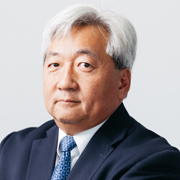Let’s Chat About…Gene-Independent Therapies for Inherited Retinal Diseases with Dr. Daniel C. Chung
We’ve heard a lot about therapies to correct mutations in specific genes causing blindness or low vision, and now research is moving beyond single-gene correction to gene-independent therapies to help delay progression in rare inherited retinal diseases (IRDs) or to restore levels of vision.
We learned about this research from Dr. Daniel C. Chung, Chief Medical Officer of SparingVision, an ocular genomic medicine company focusing on gene-agnostic or gene-independent therapy and gene-editing approaches to combat blinding diseases.

Dr. Daniel C. Chung
Hope in Focus featured Dr. Chung in its June 21, 2022, webinar episode titled “Let’s Chat About…Gene Independent Therapies for Rare Inherited Retinal Diseases.” Courtney Coates, Director of Outreach and Development, moderated the session which can be viewed here. “Let’s Chat About…” is our free webinar series bringing together researchers, advocates, industry leaders, and people living Leber congenital amaurosis (LCA) or other IRDs for conversations important to the rare retinal disease community.
Before his recruitment to SparingVision, Dr. Chung worked with Spark Therapeutics and focused on developing LUXTURNA®. The medicine injected under the retina became the first, and so far, only, gene therapy approved by the U.S. Food and Drug Administration (FDA) and the European Medicines Agency (EMA) for use in a blinding genetic disease called LCA. The drug targets IRDs due to variants in the RPE65 gene, known as LCA2 (RPE65), which is one of 27 identified forms of LCA, and helped improve vision in people who underwent the procedure that involves a subretinal injection of the medicine into each eye.

Dr. Chung served as the Ophthalmology Therapeutic Leader for Spark, where he led the medical affairs group and contributed to clinical development and operations, marketing, business development, patient advocacy, and preclinical research and development.
With more than 300 genes causing IRDs, and research underway involving myriad programs in academia and the biotech industry, Dr. Chung explained the focus of the company headquartered in Paris with offices in Philadelphia.
“What we are trying to do at SparingVision is to look at some of the ways we could do gene-independent approaches, which means we’re not necessarily correcting the genetic defect, but using other genetic parameters where we can help slow down the degeneration of disease in a gene-independent way.”
Slowing down retinal disease progression
Dr. Chung said one of the company’s preclinical research programs seeks to preserve cone function in people living with rod-cone dystrophies, concentrating on the most common form, retinitis pigmentosa (RP), which is a group of related eye disorders that cause progressive vision loss as the retina’s light-sensing cells deteriorate. The disease affects 2 million people worldwide, or about 1 in 3,500 individuals.
RP affects rod photoreceptors that provide periphery vision, along with night, dim light, and side vision, while cone photoreceptors in the middle of the eye provide the best visual acuity, color vision, and daytime vision.
The question for SparingVision Co-Founders Dr. José-Alain Sahel and Thierry Léveillard, PhD, became: Is there a connection between the death of rod and cone photoreceptors?
The team, which also included Dr. Saddek Mohand-Said, was the first to hypothesize and demonstrate that rod photoreceptors produce a protein that rescues cone photoreceptors, thereby maintaining – and prolonging – light-adapted and high-resolution vision.
They discovered what they call Rod-derived Cone Viability Factor or RDCVF, produced by the NXNL1 gene, which has two forms – a short form and a long form.
“Basically, the short form is a survival factor,” Dr. Chung said, “a factor that occurs naturally in everyone’s eyes, where these rods cells that are on the periphery secrete a protein that attaches to cone cells, and through this long mechanism of metabolic activity helps to protect the cone cells and keeps them functioning and their structure moving forward. So that’s what happens normally.
“But in diseases where you have rod cell death, you don’t have that factor being produced anymore and that’s why it’s gene independent because it really doesn’t matter why your rods are dying. It simply matters that they’re not there to produce that factor and that factor’s necessary to keep your cones functioning, to preserve vision.
“So, by using gene therapy, we’re putting that factor, RDCVF, back into the eye of patients and hopefully we’re able to slow down the degeneration of their cones, and the cones are again for your central vision, your daytime and color vision, and we hope to be able to extend that a significant period of time. As you know, most RP types have a relatively slow degeneration, so if we were able to slow that down by 40 or 50 percent, you would have significantly longer usable vision.”
The gene produces two different factors, the secreted short form and another long form that acts as a powerful antioxidant. We’ve all heard about eating your blueberries and cranberries because they are healthy and high in antioxidants, he said.
“That’s something that works within the retina as well because the retina uses more oxygen than any other organ in the body by gram weight. And because of that, there’s a lot of reactive oxygen species that are produced and so you have to dampen those, and this is what we call the long form of RDCVF.
“The long form works by being a powerful antioxidant, so that coupled with the other property of the secreted form, the two act together to help cone survival.”
Restoring Cone Cell Function
SparingVision’s second research program focuses on another factor. Preclinical research under the guidance of SparingVision Chief Scientific Officer Dr. Deniz Dalkara deals with restoring function to cone cells that have lost the ability to function, but their cell body remains.
These dormant cones are viable cones with diminished outer segments that no longer respond to light, as such that the patients’ light response decreases, and they become unable to see. Since the phototransduction cascade – the process through which photons, or elementary particles of light, are converted into electrical signals, which allows for normal vision – occurs in the outer segment of the cones, these dormant cones are no longer capable of converting light into an electric signal, leaving patients with decreased vision and, as the disease progresses, blindness.
SparingVision research involves an injection that provides dormant cone cell bodies with a channel protein that would allow to restore a short phototransduction cascade within the dormant cone, restoring electric signals, and thereby possibly restoring light sensitivity, visual acuity, and color vision.
“This we believe will actually restore function to cone cells that have lost the ability to function, but their cell body remains. In retinal degeneration, we see that the function is lost, and certain types of structure is lost, but the main cell body stays intact,” he said.
“You can revive those dormant cone cells and thereby restore some level of vision. Again, it doesn’t matter why they degenerated, so it’s not gene dependent because we’re not correcting the gene that caused the degeneration, but we’re adding another factor in that.
Dr. Chung said human trials will start “we hope, very soon.”
He also described the company’s CRISPR gene-editing research, in which the therapy acts as molecular scissors, cutting or editing out gene misspellings that cause dysfunction.
Regarding the company’s research projects, Dr. Chung said, “We’ve gone from one end, where we are gene independent and then we’ve gone all the way to the other side, where CRISPR is not only gene dependent, but it’s also dependent on the misspelling within that gene, and each gene has a lot of misspellings that can cause disease, and so this is a little more targeted.”
Genetic Testing Still Necessary
Dr. Chung said it is still critical that people get a confirmed genetic diagnosis through genetic testing, accompanied by genetic counseling.
“Even though we may be gene independent, I think that the idea is we still want to encourage people to get their genetic diagnosis.”
A definitive diagnosis will help people understand their retinal disease, learn about rates of disease progression, and get connected with patient community organizations, such as Hope in Focus, he said.
On SparingVision, Dr. Chung said the business is not just a gene therapy company.
“We totally think of ourselves as a genomic medicine company, and that’s really using all the genetic tools that are in the toolbox to combat these inherited retinal diseases or ocular diseases in general.”
The company wants to work on many different approaches to have more choices for a tailored therapeutic option.
“We just want to do as many different strategies as we can to try and get more options for patients. I think obviously it would be great to be in a world where it’s not a matter of having one therapeutic option but to have several therapeutic options that are tailored toward where you are in your disease progression and what fits best for you and the inherited retinal disease or ocular disease that you have.”
